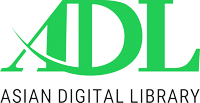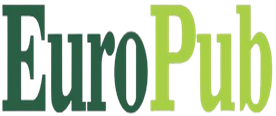Hydration and oral health: A five-year study on beverage consumption and dental outcomes across public tertiary care hospitals and private clinics in Pakistan
DOI:
https://doi.org/10.71085/sss.04.03.317Keywords:
Oral Health, Hydration, Beverage Consumption, Dental Caries, Pakistan, Public Hospitals, Private Clinics, Socioeconomic FactorsAbstract
To evaluate the association between beverage consumption and oral health outcomes in patients attending public tertiary care hospitals and private clinics across Pakistan’s provinces, with a focus on socioeconomic influences. A prospective cohort study (2020–2025) was conducted at public tertiary care hospitals and private clinics in Punjab, Sindh, Khyber Pakhtunkhwa (KPK), Balochistan, and federally administered areas, involving 1,000 participants (600 males, 400 females, aged 12–80 years). Beverage intake was assessed via validated dietary questionnaires, and oral health outcomes (dental caries, periodontal disease) were evaluated through clinical examinations. Chi-square tests and logistic regression analyzed data. Dental caries affected 65% of participants, with higher prevalence in males (70% vs. 58%, p<0.01) and public hospital patients (68% vs. 60%, p<0.05). Daily sugary beverage consumption (55% of participants) increased caries risk by 1.5 times (OR=1.50, 95% CI: 1.20–1.88, p<0.01). Tap water consumption was protective (OR=0.65, 95% CI: 0.50–0.85, p<0.05). Socioeconomic factors, including income and education, influenced outcomes. Sugary beverages elevate caries risk, particularly among lower-income public hospital patients, while tap water supports oral health. Interventions addressing socioeconomic disparities are needed
Downloads
References
Petersen PE. The World Oral Health Report 2003. Continuous improvement of oral health in the 21st century. Community Dent Oral Epidemiol. 2003;31 Suppl 1:3–23. https://doi.org/10.1046/j.2003.com122.x
Al Anouti F, Al Kaabi L, Al Kaabi B, et al. The impact of beverage consumption on oral health: a narrative review. Nutrients. 2022;14(10):2034.
Moynihan PJ, Kelly SA. Effect on caries of restricting sugars intake: systematic review to inform WHO guidelines. J Dent Res. 2014, 93(1)8–18. https://doi.org/10.1177/0022034513508954
Malik VS, Popkin BM, Bray GA, et al. Sugar-sweetened beverages and risk of metabolic syndrome and type 2 diabetes. Diabetes Care. 2010, 33(11) 2477–2483. https://doi.org/10.2337/dc10-1079
Tahir R, Qureshi MA. Oral hygiene practices and awareness in patients visiting OPD of a teaching hospital in Lahore. Pak Oral Dent J. 2019, 39(1):82–86.
Khan AA, Jain SK. Socioeconomic inequalities in dental caries in Pakistan. Int Dent
J. 2019, 69(5) 345–353.
Baelum V, Van Palenstein Helderman W. Oral health in developing countries. Int Dent J. 2003, 53(S5) 241–249.
Nazir MA. Prevalence of periodontal disease, its association with systemic diseases and prevention. Int J Health Sci (Qassim). 2017, 11(2) 72–80.
Adyatma YM, Kurniawati A, Suwargiani AA. Correlation between consumption of acidic beverages and dental erosion. J Int Dent Med Res. 2021, 14(1) 171–174.
Pakistan Bureau of Statistics. Household Integrated Economic Survey 2020–21. Govt. of Pakistan.
Kranz AM, Gahlon G, Dick AW, Stein BD. Characteristics of children with poor oral health. J Public Health Dent. 2021, 81(1) 10–18.
Arif S, Malik AK, Qazi SR. Oral health disparities in public and private health sectors in Pakistan. Pak Oral Dent J. 2020, 40(4) 200–204.
Khan SM, Ahmad S, Khalil M. The burden of oral diseases in Pakistan: a review. Pak J Med Sci. 2021, 37(3) 842–847.
Nazir M. Public health challenges in Pakistan and the way forward. Int J Health Sci (Qassim). 2017, 11(3) 63–64.
Muneer MU, Rehman A, Hussain H. Beverage consumption and oral health awareness among university students in Lahore. Pak Oral Dent J. 2021, 41(2) 95– 99.
World Health Organization. Sugars and dental caries. Who Technical Information Note. Geneva: Who; 2017. https://doi.org/10.2471/B09443
Ahmed S, Junaid M. Assessment of fluoridation in tap water and its impact on dental caries. J Coll Physicians Surg Pak. 2020, 30(9) 951–955.
Al-Majed I, Maguire A, Murray JJ. Risk factors for dental erosion in 5–6-year-old and 12–14-year-old boys in Saudi Arabia. Community Dent Oral Epidemiol. 2002, 30(1) 38–46. https://doi.org/10.1034/j.1600-0528.2002.300106.x
Qazi SR, Farooq MU. Dietary sugar intake and dental caries status in Pakistani children. i. 2019, 35(6) 1643–1647.
Sheiham A, Watt RG. The common risk factor approach: a rational basis for promoting oral health. Community Dent Oral Epidemiol. 2000, 28(6) 399–406. https://doi.org/10.1034/j.1600-0528.2000.028006399.x
Batool H, Javed M, Iqbal M. Consumption of sugar-sweetened beverages and associated health risks among adults in Punjab, Pakistan. Biomed Res Int. 2021; 2021:7790873.
Baig N, Begum S. Oral health awareness and practices among patients in Karachi. J Dow Univ Health Sci. 2018, 12(1) 27–30.
McGrady MG, Ellwood RP, Maguire A. Dietary habits and dental erosion in Pakistani adolescents. Caries Res. 2012, 46(3) 221–226.
Touger-Decker R, Mobley C. Position of the American Dietetic Association: Oral health and nutrition. J Am Diet Assoc. 2007,107(8) 1418–1428.
Marshall TA. Dietary guidelines and oral health: implications for dental practice. J Am Dent Assoc. 2013, 144(10) 1127–1133.
Qamar W, Ishfaq M, Khan T. Dental hygiene behavior in relation to oral diseases in rural areas of KPK. Khyber Med Univ J. 2020, 12(1) 33–37.
Farooqi FA, Khabeer A, Moheet IA. Prevalence of dental caries among primary school children in Pakistan. BMC Oral Health. 2015; 15:73.
Memon S, Shaikh AA, Fahim MF. Oral health disparities among Pakistani children by income and region. Pak J Med Sci. 2022, 38(5) 1234–1240.
Moynihan PJ. The role of diet and nutrition in the etiology and prevention of oral diseases. Bull World Health Organ. 2005, 83(9) 694–699.
Nagi R, Reddy-Kanth MR, Rakesh N, et al. Saliva as a diagnostic tool in oral cancer detection: A review. J Oral Oncol. 2016, 2(1):10–18.
Downloads
Published
Data Availability Statement
The data that support the findings of this study are available from the corresponding author upon reasonable request.


































